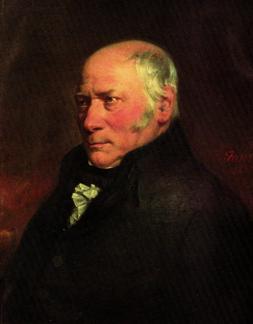 As geologist and science writer Nina Morgan discovers, some lecturers are more enlightening than others
As geologist and science writer Nina Morgan discovers, some lecturers are more enlightening than others
Sending out review copies of a new book in the hope that a favourable notice will appear in relevant and well read publications is done routinely today. It was no different in the 18th Century. All the great geological authors were happy to send complimentary copies of their latest opus magnum to colleagues who in turn provided comprehensive and very lengthy reviews which were printed in prominent publications of the day. Lecturing was another key promotion strategy, and this was one that William Smith (1769 – 1839) – keen to promote his geological credentials – was more than happy to embrace.
PROMINENT
In 1824 William Smith met some prominent members of the recently formed Yorkshire Philosophical Society, and as a result received an invitation to deliver a course of eight lectures on geology in York. According to Smith's nephew, the geologist John Phillips (1800-1874), this was an invitation Smith was delighted to accept. In his book, Memoirs of William Smith, LL.D, Phillips reports that:
"...Mr. Smith, who though he had never lectured [all italics sic], had for half his life been talking on geology, immediately accepted the proposal. New maps were coloured, new sections drawn, and even the distant cabinet of Mr. Richardson [the Reverend Benjamin Richardson, a great supporter of Smith] at Farley was laid under contribution to supply illustrations for these discourses. On his arrival in York, Mr. Smith was warmly greeted by the zealous President and first Secretaries (D. Goldie and Mr. Copsie) of the Society; the lecture-room fitted up for the occasion, was crowded; and the course was successfully conducted."
As Phillips reveals, during the lectures his uncle demonstrated his very engaging personality:
"...There was a charm thrown over these discourses by the novelty and appropriateness of the diagrams and modellings which exemplified the arrangement of rocks, the total absence of all technical trifling from the explanations, and the simplicity and earnestness of the man."
But even Phillips, a great admirer of his uncle's achievements had to admit that Smith's lecturing style left something to be desired:
ABSTRACTEDNESS
"A certain abstractedness of mind, generated by long and solitary meditation, a habit of following out his own thoughts into new trains of research, even while engaged in explaining the simplest facts, continually broke the symmetry of Mr. Smith's lectures. Slight matters, things curious in themselves but not clearly or commonly associated with the general purpose of the lecture, swelled into excrescences, and stopped the growth of parts which were more important in themselves, or necessary to connect the observations into an intelligible and satisfactory system."
When it came to conveying information, it appears that Smith's 'pictures', in the form of maps and diagrams, were worth more than many thousands of his words. And these days they sell for many thousands of pounds!
Acknowledgement
The main source for this vignette is Memoirs of William Smith, LL.D, author of the "Map of the Strata of England and Wales” by his nephew and pupil, John Phillips, F.R.S., F.G.S., John Murray, London, 1844. Smith fans will be glad to know that the vast of amount of Smith archive material in the collections of the Oxford University Museum of Natural History is now available online at
www.williamsmithonline.com
- If the past is the key to your present interests, why not join the History of Geology Group (HOGG). For more information and to read the latest HOGG Newsletter, visit the HOGG website at: www.historyofgeologygroup.co.uk, where you'll also find abstracts for the talks and posters presented at the Conference on Geological Collectors and Collecting, April 2011 available free to download as a pdf file.